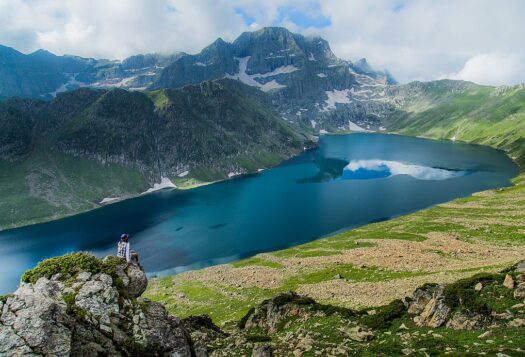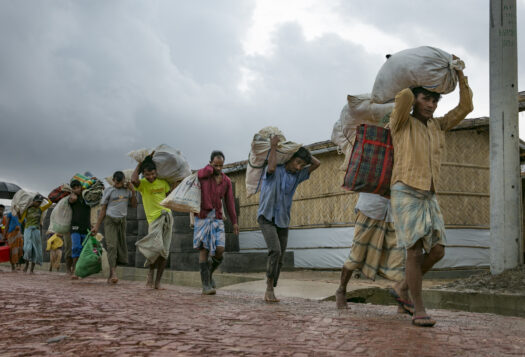
Local sentiment in Gilgit-Baltistan (GB) has been growing in favor of reviving connectivity with India. Patterns of livelihood and kinship ties still unite the people of these regions, and now India’s expanding economy can be a strong incentive for blurring the heavily-guarded border. At a time when several points on the India-Pakistan border have been opened, time has come for the economic isolation of Ladakh-GB to end.
History
Located on the northernmost edge of the Indian subcontinent in the Karakoram mountain range is the region of Gilgit-Baltistan. When India achieved independence from the British and Pakistan came into existence, the ruler of the princely state of Kashmir (who also exercised suzerainty over this region) had been buying time to decide to which country his state would accede. This political imbroglio resulted in an intense conflict. Since then, Pakistan has administered the region. The 1960s witnessed a widening schism between India and Pakistan, with a war in 1965 and the Sino-Pak boundary agreement of 1963, whereby Pakistan ceded the Trans-Karakoram tract to China (which India had also claimed). But local voices still call for reviving the centuries-old linkages between the Ladakh side of Indian Kashmir and Pakistan’s Gilgit-Baltistan.
Today, there are several opportunities that can take Indo-Pak cooperation in this region to new levels, ranging from trade to climate change.
Connectivity and Economics
Though the issues of high politics are quite complex, cooperation based on low politics cannot be ruled out entirely. A few roads directly linking the Kashmir and Ladakh regions to the GB region still exist. These can be made operational again for trade and travel. To explore avenues of cooperation, a prime ministerial working group was established under the leadership of former Indian foreign secretary M.K. Rasgotra in 2006. The committee came out with some significant proposals, including opening of the following routes across the Line of Control (LoC) connecting the GB region:
- Kargil-Skardu route
- Gurez-Astoor-Gilgit route
- Turtuk-Khapalu route
The Kashmir dispute and a heavily securitized GB snapped India’s direct linkages to Central Asian markets. From the Pakistani side, the centuries-old connectivity of Xinjiang and GB to the markets of Kashmir and Punjab were severed. Add to that the mountainous terrain and the result is a poorly developed economic base in both regions, where sustenance depends on the local economy. Enhancing connectivity would expand economic opportunities.
Additionally, the people of Ladakh and Gilgit-Baltistan share numerous affinities that cut across religious, cultural, and civilizational lines. Both regions consist of large populations following the Shi’ite sect of Islam, forming a natural bond while sections are also tied together by Buddhism. There are also strong familial links, with divided families pushing for connectivity to be improved. Thus, Indo-Pak cooperation in this area may help diffuse some of the grievances of the population.
Climate Change
Areas like GB and Ladakh consist of numerous glaciers providing water to the Indus river, which is Pakistan’s lifeline. In 2010, a massive landslide on Karakoram Highway created a huge lake, severing Sino-Pak road connectivity. The same year, flash floods in Indus and its tributaries ravaged the Ladakh region. This disaster affected thousands and brought the region to a standstill. In fact, heavy rains and flooding are lashing GB as I write this. Besides these, occurrences of glacial lake bursts have increased in recent years. However, these may be necessary motivation for both nations, as cross-border cooperation in combating climate change is pivotal to stemming the next disaster. Notwithstanding securitization, the military from each side can become an important stakeholder in these efforts, charting an action plan to address these immediate and common threats.
Challenges Ahead
On his visit to Kargil in 2005, India’s then-Prime Minister Manmohan Singh, proposed opening the Kargil-Skardu route. However, the Pakistani establishment’s response to these proposals has been lukewarm, as it potentially fears that Indian access to the sole Sino-Pak artery (especially the Karakoram Highway) will open its soft underbelly to India. This is a serious concern given that both Indian and Pakistani sides remain heavily militarized in this region, especially after the Siachen Glacier conflict in 1984 and the Kargil War in 1999.
Another challenge to cooperation may be that the massive infrastructural update and accompanying securitization in the form of the China-Pakistan Economic Corridor (CPEC) may reduce interest in opening these routes from India. Moreover, the Pakistani government’s proposal to make GB its fifth province resulted in objections from the Indian side, as any attempts to declare this disputed region as a province would be in violation of United Nations provisions.
Despite the complexity of the dispute, a few initiatives won’t spoil the security calculus, especially since some mechanisms for cooperation already exist. The horrors of partition can be assuaged with the opening of borders for trade, cultural exchanges, and most importantly, climate change cooperation, an existential threat to the region.
***
Image: Aamir Qureshi-AFP, Getty


